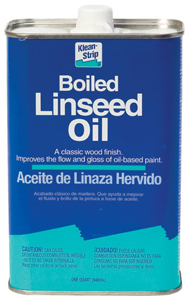
I restore horse-drawn wagons. In the old days, wagon manufacturers would dip the wooden wagon wheels in boiling linseed oil before painting with an oil-based paint. I assume they also painted the running gear and box with linseed oil before painting with an oil-based paint. In those days, of course, paint had lead in it. That’s why you can still see paint on a 100-year-old wagon. My question is: would boiled linseed oil (with dryers) still be a good sealer and base before painting with an oil-based paint? I like to stay as authentic as possible, but in this advanced modern age is there something that would be much better as a sealer and protector of the wood? — Tom Elliott
Tim Inman: Actually, one of my grandfathers was a blacksmith! I grew up around his shops as a boy. One of his shops was the blacksmith shop where all the dirty metal stuff happened; the other was the wagon shop — where the serious woodworking happened. He hand cut his own spokes and felloes, and he could even turn the hubs. Many times I helped him shrink an iron tire onto a wooden wheel. He was a patient man, but at those times, he didn’t want to stand around and visit about his decisions as to how he wanted that tire set! (FYI, the iron tire is heated to low red-hot, which swells it up. Then, it is carefully and very quickly put over the wooden wheel by a crew of helpers under the smith’s direction. Water is poured on to cool down the iron and make it fit right. The water is very selectively used to make the tire shrink down equally and “just right.” If things go wrong, the wheel can be ruined almost instantly.)
The original wagon/buggy wheels were probably treated with boiled linseed oil. It wasn’t “boiling,” but the boiling process created an oil that had good drying characteristics. When the oil had been “boiled,” it dried. Raw linseed oil (unboiled) would not dry hard. Now, instead of using the dangerous process of boiling oil (it could explode if not done correctly!), we add drying agents like cobalt or Japan oils. Same difference in the long run.
In addition to simply making the wood less prone to soaking up liquids (you know where buggy wheels go….), the linseed oil has another unique quality. Boiled linseed oil will actually cause wood fibers to swell a little. Thus, it makes the wheel a little tighter! As for paints … well, red lead is still the best for lasting in your case. But red lead is very toxic, and probably not what you want to use. I would suggest a good polyurethane outdoor porch floor paint. Then, don’t expect too much from it. Wagon wheels live a hard life. Be prepared to repaint.
Chris Marshall: Tom, email or snail mail us a few good quality photos of your restoration work! That might be interesting to share in our Shop Talk department of the print magazine or on our blog. And, thanks for keeping some old traditions and trades alive and well.





